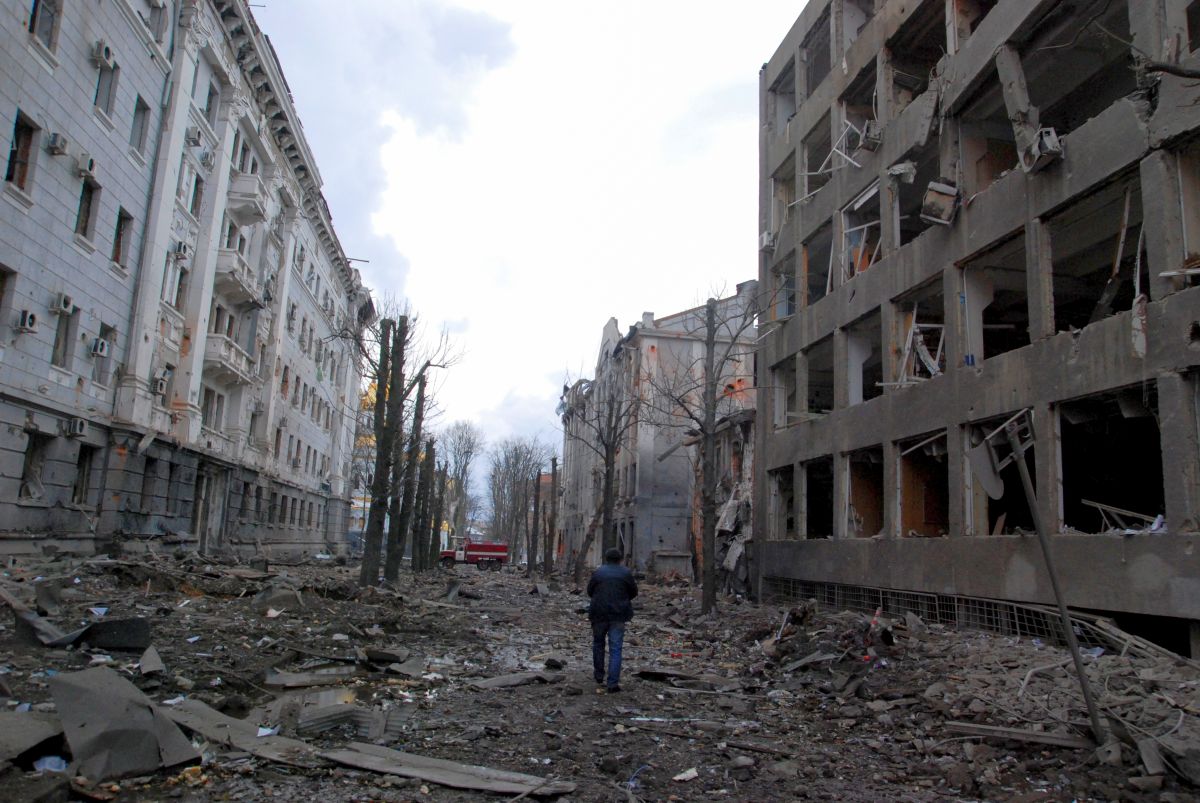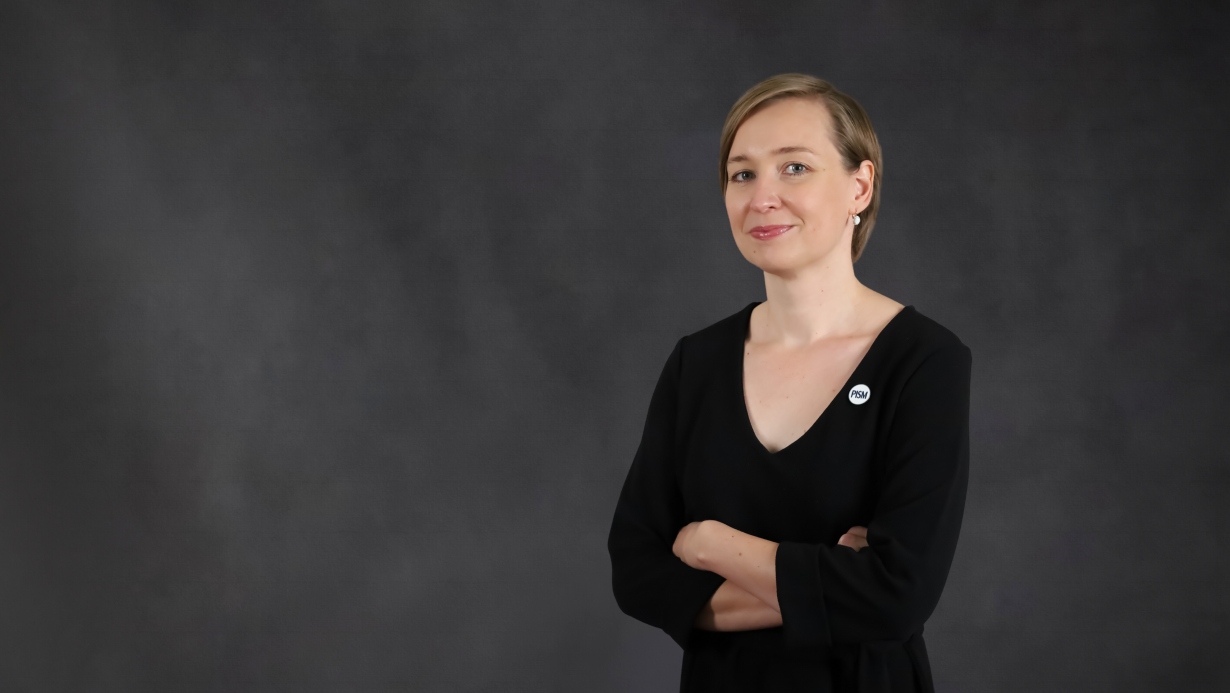Sweden on the Russian Aggression Against Ukraine
Russia’s invasion of Ukraine has caused Sweden to further tighten its relations with the U.S. and deepen cooperation with NATO. It is in tandem with Finland, with which it closely coordinates next steps to strengthen defence in the Nordic-Baltic region. In Sweden, however, the political debate on membership in the Alliance is less advanced.
 STRINGER/Reuters/Forum
STRINGER/Reuters/Forum
What was the government’s reaction?
On 24 February, Swedish Prime Minister Magdalena Andersson condemned the Russian invasion, which she described as an unprovoked attack on Ukraine and the European security order. She announced a severe response in the form of sanctions and extensive assistance to Ukraine. On the same day, the defence ministers of the Nordic countries in a joint communiqué called on Russia to cease military operations and withdraw from Ukraine, and expressed support for its sovereignty and territorial integrity. A similar statement was issued on 1 March by the states of the Arctic Council (excluding Russia), which suspended their participation in all its meetings. Sweden closed its airspace to Russian aircraft. It has supported all EU sanctions to date and has called for further action, including a boycott of sports exchange with Russia, stopping the sale of golden passports in EU Member States to Russian citizens, and for establishing a mechanism to gather facts and investigate possible crimes committed by Russia in Ukraine. The government also urges Swedish scientific institutions and higher education units to suspend cooperation with state institutions in Russia and Belarus. The authorities also expressed their readiness to accept refugees from Ukraine.
What support does Sweden provide to Ukraine?
Sweden, like Finland, made a historic decision to arm Ukraine, breaking with the longstanding policy—laid down in law—of not sending weapons to states at war (the last such case was supporting Finland at the beginning of the Soviet invasion in 1939). On 28 February, the Swedish parliament authorised the government to provide Ukraine with military equipment worth SEK 400 million (around €37 million), including 5,000 AT4 anti-tank weapons, body armour and helmets (5,000 units each), and 135,000 food packages (already transported). Sweden also is sending a large amount of medical equipment (including ventilators, drips, bandages). Its financial assistance to Ukraine is also significant—it has supported the country’s armed forces with SEK 500 million (around €46 million) and provided an equivalent amount of additional humanitarian aid for Ukraine and Ukrainian refugees (including in Moldova). These funds are to be distributed successively mainly by the International Red Cross and UN agencies. In addition, Sweden will guarantee a loan from the World Bank worth €45 million.
How does the war affect Sweden’s security policy?
In the opinion of the Swedish authorities, the security situation in the Baltic region has deteriorated dramatically. The government assumes that in the event of a NATO-Russia military conflict, the Baltic region would be included in it. Therefore, in addition to sanctioning Russia and helping Ukraine, non-aligned Sweden is strengthening its own capabilities, including through multinational JEF exercises (Joint Expeditionary Force) led by the United Kingdom, with troops provided also by the Netherlands and the Nordic and Baltic countries. The JEF is prepared to conduct a full spectrum of operations, including in the event of an armed conflict (its first exercises took place on 4 March in Denmark, and a whole series of manoeuvres is planned for the coming months). Sweden has been modernising its armed forces since 2016, and has announced an increase in defence spending in 2021 (from 1.1% of GDP to around 1.5% of GDP in 2025). It is also continuing joint exercises with Finland, with which it has significantly strengthened its military cooperation in recent years.
How do Sweden and Finland coordinate security and defence policy?
Both countries are striving in tandem for closer relations with the U.S. and NATO. The Alliance in response to the Russian invasion of Ukraine, decided to strengthen coordination and increase the exchange of information with Sweden and Finland. From the beginning of the invasion, they have been participating in all the Alliance’s consultations on the war in Ukraine. Finland is leading the way in further rapprochement with NATO and the U.S. because it was directly threatened by Russia recently. During a meeting between Presidents Joe Biden of the U.S. and Sauli Niinistö of Finland on 4 March in Washington, the leaders consulted Prime Minister Andersson on the phone. On 5 March, the prime ministers and defence ministers of Sweden and Finland agreed in Helsinki to further tighten cooperation. According to media reports, the topic of the talks with the American administration is on granting the two Nordic countries the status of a U.S. major non-NATO ally, which would facilitate their access to military technology and prepare their potential membership in the Alliance. However, this information was not confirmed by the leaders.
What does the debate on NATO membership look like in Sweden?
In Sweden, public support for membership has been growing steadily since Russia put demands on the West in December 2021. According to polls from February before the start of the Russian invasion, this support had reached a record level of 51% (27% against, 22% undecided). In January it was 37%, and in 2017, 32%. However, the public discussion on NATO membership is less advanced in Sweden than in Finland. Although the majority of the Riksdag supports Sweden maintaining the possibility of joining the Alliance, the government has not announced that it will actually apply for membership. The ruling Swedish Social Democratic Party, the Green Party, the Left Party and the nationalist Swedish Democrats who make up the parliamentary majority, are against it. On the other hand, the majority of the opposition, which includes the right-wing parties the Moderate Coalition Party, the Centre Party, the Christian Democrats and Liberals, have long wanted to join the Alliance and they are putting pressure on the government to revise its security policy given Russia’s latest aggression. So far, this has been ineffective: on 8 March, Prime Minister Andersson expressed concerns that the submission of the application by Sweden could destabilise security in the Nordic-Baltic region. This means that Finland’s determination has not induced Sweden to move forward to the same extent on accession to NATO. However, in the near future, this difference may only be a formality, given the rapid progress of tightening the multi-faceted cooperation between Sweden and the Alliance, which, however, does not include security guarantees.


